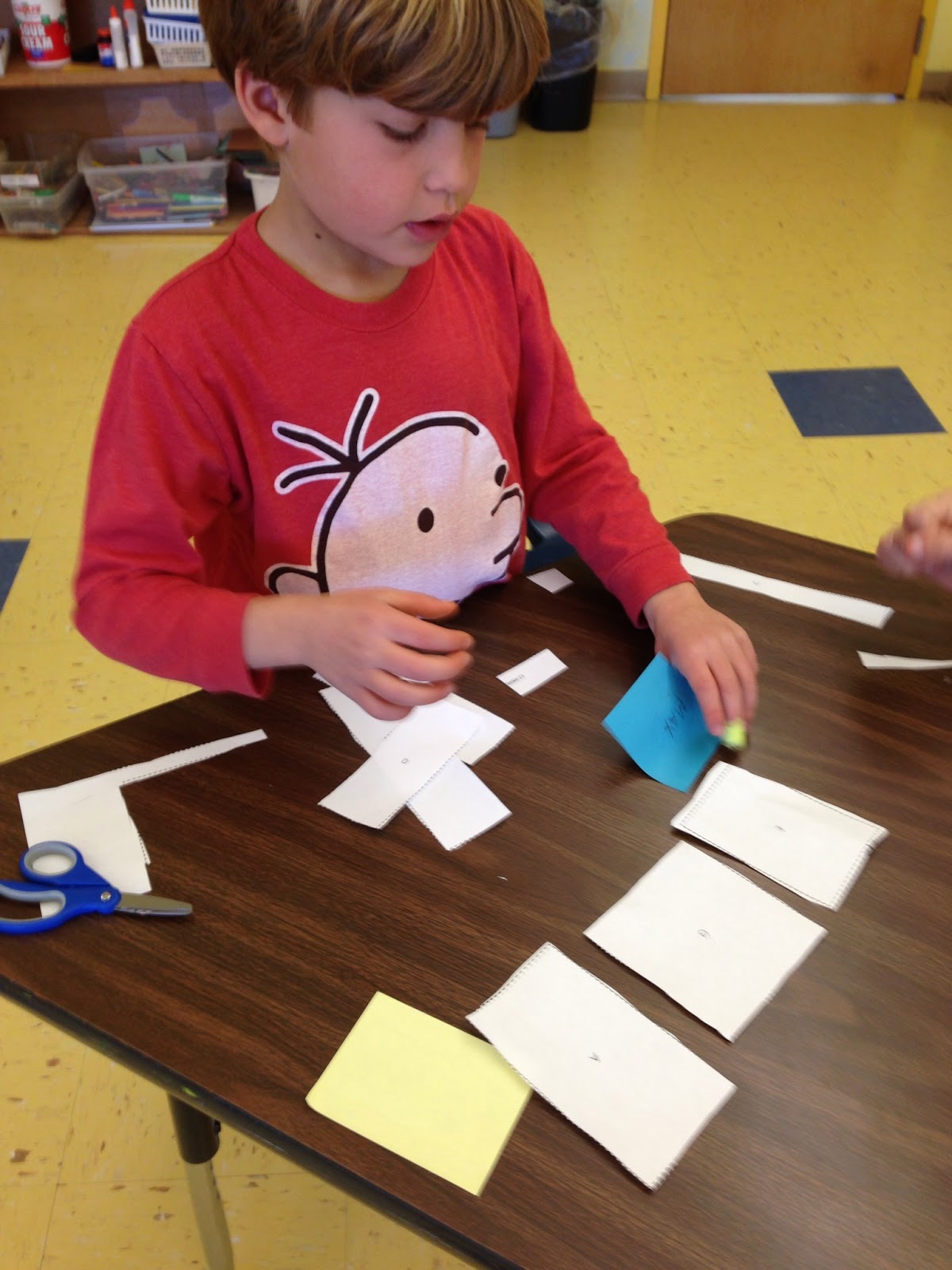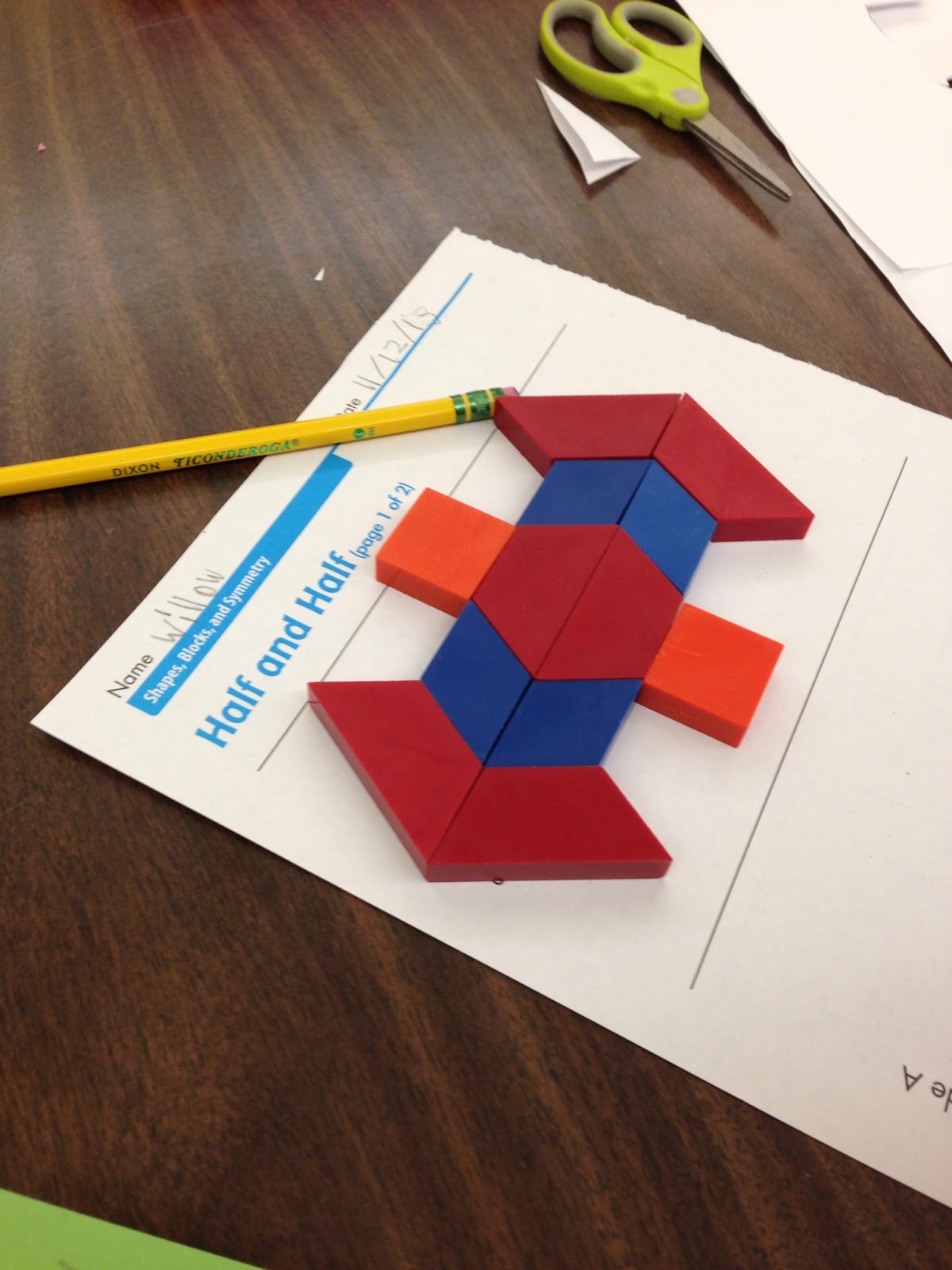The second graders recently finished up our unit on 2D and 3D geometry. This unit provided us with many rich opportunities for hands on learning as the students searched for shapes around our classroom and at home, read books about the subject, created 3D rectangles out of paper, and used mirrors to explore symmetry. There were many highlights of this unit - here are some of our favorites......
After introducing solid shapes, we read the book
Sir Cumference and the Sword in the Cone, by Cindy Neuscwander. A Swiss mathematician, Leonhard Euler, created a formula that expressed a relationship between the faces, vertices and edges of solid shapes. He discovered that adding the numbers of flat faces of any solid shape to its corresponding vertices (or corner points) and then subtracting that sum from the number of straight edges, the result would be represented by a total of two. When the result was two, that meant that the solid shape could be classified as a polyhedron. Any solid shapes whose totals were not two cannot be considered polyhedrons. After reading the book, we discussed and carefully studied the shapes presented in the story. We created a chart to fill out the number of faces, vertices and edges of each shape, and then applied the equation and gave each shape the "Two's Test." This gave the students opportunity to carefully examine each shape as well as practice with making advanced and intricate calculations. This activity quickly became a favorite. When reflecting back at the end of the unit, many students claimed the Two's Test was their favorite part of studying geometry!
 |
Taking the "Two's Test"
|
Another thought provoking and fun activity was to create "tricky triangles" or rectangles, and find hidden shapes within shapes. The students learned there are usually more shapes present than initially thought. They also devised wonderful strategies to find the various hidden shapes.
 |
| Finding hidden triangles |
When initially asked to put a group of rectangles in order from smallest to largest, students normally will choose the order based on height. After we discussed the concept of area and determined how to measure the area of a rectangle by using 1 inch square color tiles, students realized that the tallest rectangles were not always the largest. This was an excellent exercise on making and testing a prediction.
 |
Ordering rectangles
|
 |
| Which rectangle is the biggest? |
 |
| Finding the area of a rectangle by using color tiles |
The students made 3 dimensional rectangles out of various sizes of paper. This activity proved challenging at first. The students weren't sure how to approach creating a 3 dimensional object out of something 2 dimensional. They needed to fit the sides together, create a top and a bottom, and finally tape it all together so it would eventually become a 3 dimensional box. After some effort and perseverance, the results were amazing - we had rectangles of all sizes, animals made out of paper shapes, fairy houses, doll beds, and colorful cubes, just to name a few of the creations. What started out as a challenge, ended up being a class favorite. The possibilities were endless!



















































